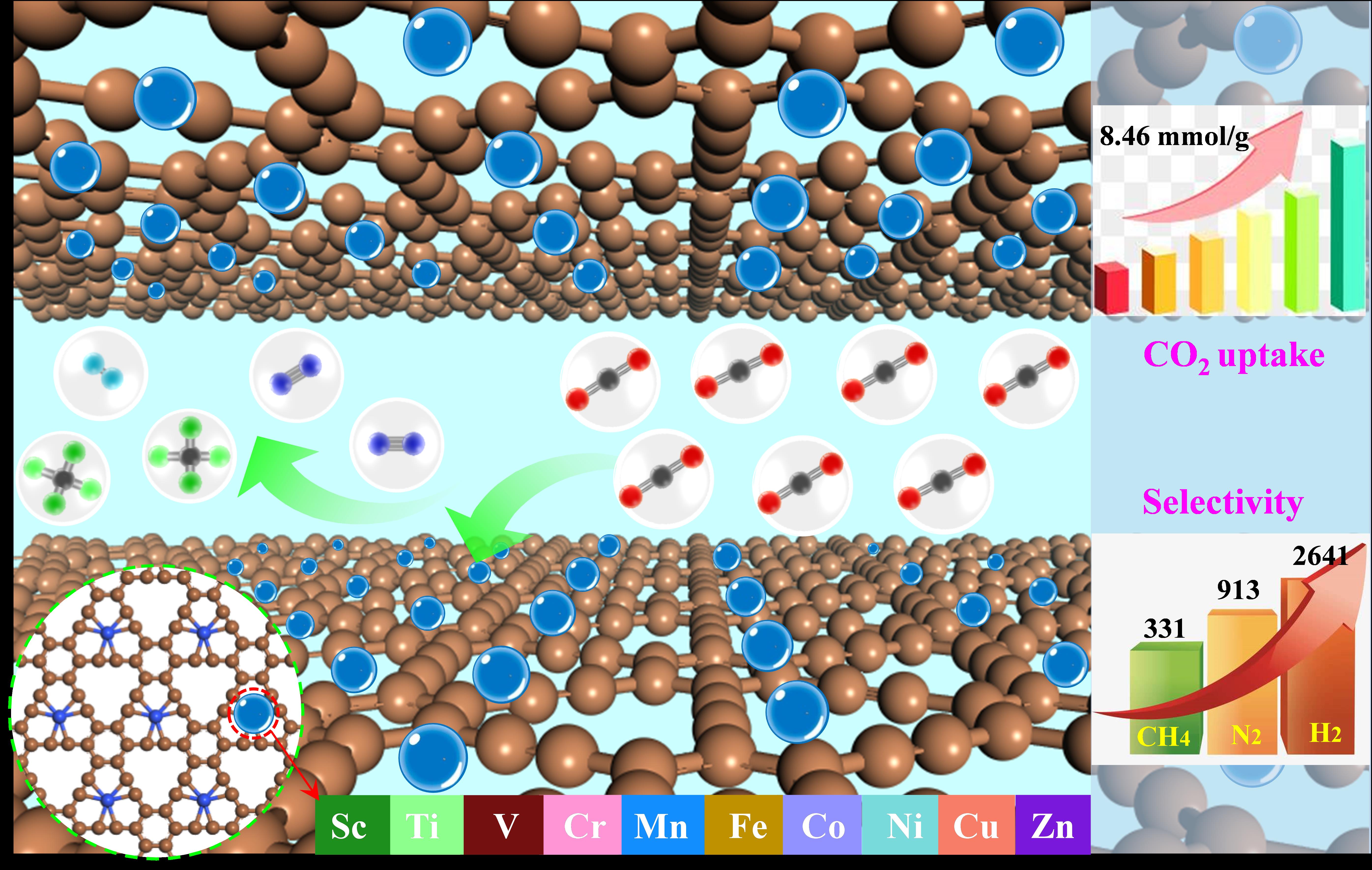
近日,博士生周赛男的论文“First-row transition-metal-doped graphyne for ultrahigh-performance CO2 capture and separation over N2/CH4/H2”被Materials Today Physics (2019年中科院SCI期刊分区一区期刊,IF=10.443) 接收!
Exploring new materials with high-performance CO2 capture and separation is critical for the development of CO2 capture and utilization strategy to alleviate the excessive CO2 emissions in the atmosphere. Herein, first-row transition-metal-doped graphynes were screened according to their stability and surface flatness, and Cu-GY, Co-GY, Fe-GY, and Mn-GY were systematically evaluated. Structural analyses showed that the four TM-GYs had high cohesive energies ranging from 7.07 to 7.35 eV/atom, moderate formation energies ranging from −6.83 to −3.28 eV, large diffusion barriers of the TM atoms ranging from 2.25 to 3.48 eV, which guaranteed their structural stabilities for CO2 capture and separation. Electronic structure analyses confirmed the evident orbital overlap, large charge transfer, and strong covalent bonding characters between the TMs and direct-connected C atoms, thus constructing a favorable gas adsorption environment. Cu-GY exhibited ultrahigh CO2 adsorption capacity of 8.46 mmol/g at 298 K and 1.0 bar, which was larger than ever reported results in slit pores and comparable to the highest adsorption capacity of 8.60 mmol/g in Mg-MOF-74 under the same conditions. At 298 K and 1.0 bar, the selectivities of CO2 over N2/CH4/H2 in Cu-GY reached up to 913, 331, and 2641, respectively. Interaction analyses proved that the CO2 interaction with frameworks via both Coulomb and van der Waals was greater than those of the other gases. Strong affinity of CO2 with Cu-GY relative to other TM-GYs and large isosteric heat differences between CO2 and other gases rendered Cu-GY to possess the ultrahigh CO2 adsorption capacity and remarkable selectivity over N2/CH4/H2. Gas distribution analyses exhibited the wide CO2 distribution composed of multilayer adsorption peaks around the TMs and adjacent C atoms, elucidating the significant effect of the TMs and TM-connected C atoms on CO2 adsorption. Results of this work highlighted TM-GYs as ultrahigh-performance adsorbents for CO2 capture and separation over N2/CH4/H2.
https://www.sciencedirect.com/science/article/pii/S2542529320301255?via%3Dihub